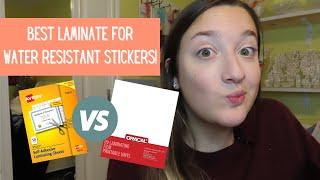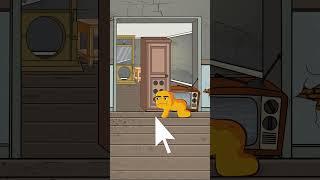
Ionic Equations & Net Ionic Equations, Dissociation & Precipitation | Crash Chemistry Academy
Using precipitation reactions (specifically double replacement) we see how to write ionic and net ionic equations and understand what they represent by reviewing dissociation and precipitation in solution. Several double replacement examples and also one single replacement example is used.
CC Academy videos are easy 101 crash course tutorials for step by step Chemistry help on your chemistry homework, problems, and experiments.
Check out our best lessons:
- Solution Stoichiometry Tutorial: How to use Molarity
- Stoichiometry
- Quantum Numbers
- Rutherford's Gold Foil Experiment, Explained
- Covalent Bonding Tutorial: Covalent vs. Ionic bonds
- Metallic Bonding and Metallic Properties Explained: Electron Sea Model
- Effective Nuclear Charge, Shielding, and Periodic Properties
- Electron Configuration Tutorial + How to Derive Configurations from Periodic Table
- Orbitals, the Basics: Atomic Orbital Tutorial — probability, shapes, energy
- Metric Prefix Conversions Tutorial
- Gas Law Practice Problems: Boyle's Law, Charles Law, Gay Lussac's, Combined Gas Law
—More on Chemical Equations | Wiki—
"A chemical equation is the symbolic representation of a chemical reaction in the form of symbols and formulae, wherein the reactant entities are given on the left-hand side and the product entities on the right-hand side.[1] The coefficients next to the symbols and formulae of entities are the absolute values of the stoichiometric numbers. The first chemical equation was diagrammed by Jean Beguin in 1615.[2] ...
A chemical equation consists of the chemical formulas of the reactants (the starting substances) and the chemical formula of the products (substances formed in the chemical reaction). The two are separated by an arrow symbol ( {\displaystyle \rightarrow } \rightarrow , usually read as "yields") and each individual substance's chemical formula is separated from others by a plus sign.
As an example, the equation for the reaction of hydrochloric acid with sodium can be denoted:
2 HCl + 2 Na → 2 NaCl + H
2
This equation would be read as "two HCl plus two Na yields two NaCl and H two." But, for equations involving complex chemicals, rather than reading the letter and its subscript, the chemical formulas are read using IUPAC nomenclature. Using IUPAC nomenclature, this equation would be read as "hydrochloric acid plus sodium yields sodium chloride and hydrogen gas."
This equation indicates that sodium and HCl react to form NaCl and H2. It also indicates that two sodium molecules are required for every two hydrochloric acid molecules and the reaction will form two sodium chloride molecules and one diatomic molecule of hydrogen gas molecule for every two hydrochloric acid and two sodium molecules that react. The stoichiometric coefficients (the numbers in front of the chemical formulas) result from the law of conservation of mass and the law of conservation of charge (see "Balancing Chemical Equation" section below for more information). ...
The law of conservation of mass dictates that the quantity of each element does not change in a chemical reaction. Thus, each side of the chemical equation must represent the same quantity of any particular element. Likewise, the charge is conserved in a chemical reaction. Therefore, the same charge must be present on both sides of the balanced equation.
One balances a chemical equation by changing the scalar number for each chemical formula. Simple chemical equations can be balanced by inspection, that is, by trial and error. Another technique involves solving a system of linear equations.
Balanced equations are written with smallest whole-number coefficients. If there is no coefficient before a chemical formula, the coefficient 1 is understood.
The method of inspection can be outlined as putting a coefficient of 1 in front of the most complex chemical formula and putting the other coefficients before everything else such that both sides of the arrows have the same number of each atom. If any fractional coefficient exists, multiply every coefficient with the smallest number required to make them whole, typically the denominator of the fractional coefficient for a reaction with a single fractional coefficient."
Wikipedia contributors. "Chemical equation." Wikipedia, The Free Encyclopedia. Wikipedia, The Free Encyclopedia, 22 May. 2016. Web. 2 Jul. 2016.
CC Academy videos are easy 101 crash course tutorials for step by step Chemistry help on your chemistry homework, problems, and experiments.
Check out our best lessons:
- Solution Stoichiometry Tutorial: How to use Molarity
- Stoichiometry
- Quantum Numbers
- Rutherford's Gold Foil Experiment, Explained
- Covalent Bonding Tutorial: Covalent vs. Ionic bonds
- Metallic Bonding and Metallic Properties Explained: Electron Sea Model
- Effective Nuclear Charge, Shielding, and Periodic Properties
- Electron Configuration Tutorial + How to Derive Configurations from Periodic Table
- Orbitals, the Basics: Atomic Orbital Tutorial — probability, shapes, energy
- Metric Prefix Conversions Tutorial
- Gas Law Practice Problems: Boyle's Law, Charles Law, Gay Lussac's, Combined Gas Law
—More on Chemical Equations | Wiki—
"A chemical equation is the symbolic representation of a chemical reaction in the form of symbols and formulae, wherein the reactant entities are given on the left-hand side and the product entities on the right-hand side.[1] The coefficients next to the symbols and formulae of entities are the absolute values of the stoichiometric numbers. The first chemical equation was diagrammed by Jean Beguin in 1615.[2] ...
A chemical equation consists of the chemical formulas of the reactants (the starting substances) and the chemical formula of the products (substances formed in the chemical reaction). The two are separated by an arrow symbol ( {\displaystyle \rightarrow } \rightarrow , usually read as "yields") and each individual substance's chemical formula is separated from others by a plus sign.
As an example, the equation for the reaction of hydrochloric acid with sodium can be denoted:
2 HCl + 2 Na → 2 NaCl + H
2
This equation would be read as "two HCl plus two Na yields two NaCl and H two." But, for equations involving complex chemicals, rather than reading the letter and its subscript, the chemical formulas are read using IUPAC nomenclature. Using IUPAC nomenclature, this equation would be read as "hydrochloric acid plus sodium yields sodium chloride and hydrogen gas."
This equation indicates that sodium and HCl react to form NaCl and H2. It also indicates that two sodium molecules are required for every two hydrochloric acid molecules and the reaction will form two sodium chloride molecules and one diatomic molecule of hydrogen gas molecule for every two hydrochloric acid and two sodium molecules that react. The stoichiometric coefficients (the numbers in front of the chemical formulas) result from the law of conservation of mass and the law of conservation of charge (see "Balancing Chemical Equation" section below for more information). ...
The law of conservation of mass dictates that the quantity of each element does not change in a chemical reaction. Thus, each side of the chemical equation must represent the same quantity of any particular element. Likewise, the charge is conserved in a chemical reaction. Therefore, the same charge must be present on both sides of the balanced equation.
One balances a chemical equation by changing the scalar number for each chemical formula. Simple chemical equations can be balanced by inspection, that is, by trial and error. Another technique involves solving a system of linear equations.
Balanced equations are written with smallest whole-number coefficients. If there is no coefficient before a chemical formula, the coefficient 1 is understood.
The method of inspection can be outlined as putting a coefficient of 1 in front of the most complex chemical formula and putting the other coefficients before everything else such that both sides of the arrows have the same number of each atom. If any fractional coefficient exists, multiply every coefficient with the smallest number required to make them whole, typically the denominator of the fractional coefficient for a reaction with a single fractional coefficient."
Wikipedia contributors. "Chemical equation." Wikipedia, The Free Encyclopedia. Wikipedia, The Free Encyclopedia, 22 May. 2016. Web. 2 Jul. 2016.
Тэги:
#aqueous_species #practice #ions #orbitals #double_replacement #soluble_ionic_compounds #precipitation_reactions #tutorial #academy #video #volume #easy #how_to #ionic_equations #problems #insoluble_ionic_compounds #chemistry #funny #stoichiometry #net_reactions #precipitation #dissociation #crash #bonding #preciptiate #covalent #aqueous_ions #chemical_reactions #explained #single_replacement #metallic #beginners #step_by_step #chemical_equations #aqueous #course #net_ionic_equations #spectator_ionsКомментарии:
1v3 ASHIKA ISLAND
DMZ BUNNY
Ionic Equations & Net Ionic Equations, Dissociation & Precipitation | Crash Chemistry Academy
Crash Chemistry Academy
Geometry Dash 2.11 - "stereo of everything" by JuhQ (Unrated 4⭐)
『Hackmanitify3348 — Geometry Dash』
Свежие фото участников дома 2 на 16 августа https://dom2na6.ru/
Новости дом 2 на 6 дней раньше эфира. Dom2na6
How to use Baking Soda for Plants
kitchen Gardening official
ХОЛОСТЯК. ИЩУ ЖЕНУ. МЫСЛИ ВСЛУХ
Из Москвы в Европу. Жизнь с нуля






![[관광버스디스코메들리] - 1 - 신나는 뽕짝 트로트 메들리 듣고 가세요! by 올버스 [관광버스디스코메들리] - 1 - 신나는 뽕짝 트로트 메들리 듣고 가세요! by 올버스](https://invideo.cc/img/upload/Y1NCdlJ4RG4wNXQ.jpg)



















